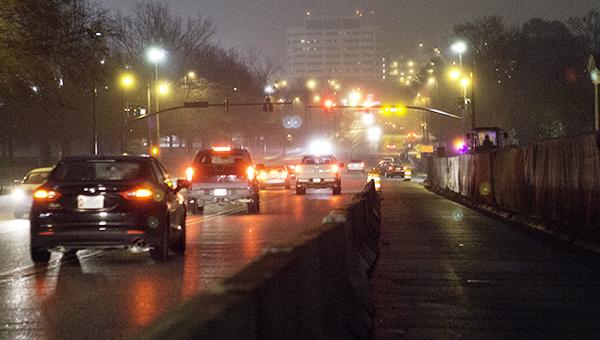Though construction has been prevalent on the University’s campus for years, some students have said the construction taking place this semester is especially inconvenient.
In addition to construction around the railroad tracks that border the southern entrances to campus, Paul W. Bryant Drive near the entrance to Coleman Coliseum is currently blocked off to one lane of traffic due to construction on Sewell-Thomas Stadium.
Cathy Andreen, director of media relations for the University, said the lane will not open again until April 15.
Another area of campus under construction is the portion of Colonial Drive alongside Bryant-Denny Stadium and sorority row. This area is closed in order to install underground utilities for the new sorority houses which are currently under construction.
“One lane of Colonial Drive will reopen Jan. 15; however, the area will be congested,” Andreen said. “The sidewalks will be closed and there will be no pedestrian traffic.”
The current closing of Colonial Drive creates a detour for drivers wishing to navigate through sorority row and forces some of the Crimson Ride transit system routes to take detours as well. Because of these altered routes, the Crimson Ride has been running at a slower pace than previous semesters.
A frequent rider of Crimson Ride, David Roberts, a senior majoring in finance and economics, said since coming back from break Crimson Ride has moved slower than usual.
“Even with making positive detours, the negative detours took me about 35 minutes to make it out to my car,” he said.
In the northeast parking lot on Campus Drive, more than 20 parking spaces have been blocked off, forcing some commuters to park in the public parking lot.
“The construction in the parking lot makes it difficult to maneuver, especially up close to the bus stop,” said Harley Rowe, a junior majoring in early childhood education.
Because orange cones outnumber open car spaces at times, students must either walk farther than usual to class or hop on the Crimson Ride, two options which can be hindered by inclement weather and detoured bus routes.
Many students voiced their sentiments about the construction projects impacting commutes on social media in the days following the start of the semester. Walkable routes on campus have not been heavily affected by construction, but drivers are forced to seek alternate routes. This has left some students wondering how to proactively plan their new routes to class this semester considering the changes on campus.
University employees suggested that if a student’s normal commute involves construction zones, the student should find an alternate route or leave earlier than normal and expect delays.









